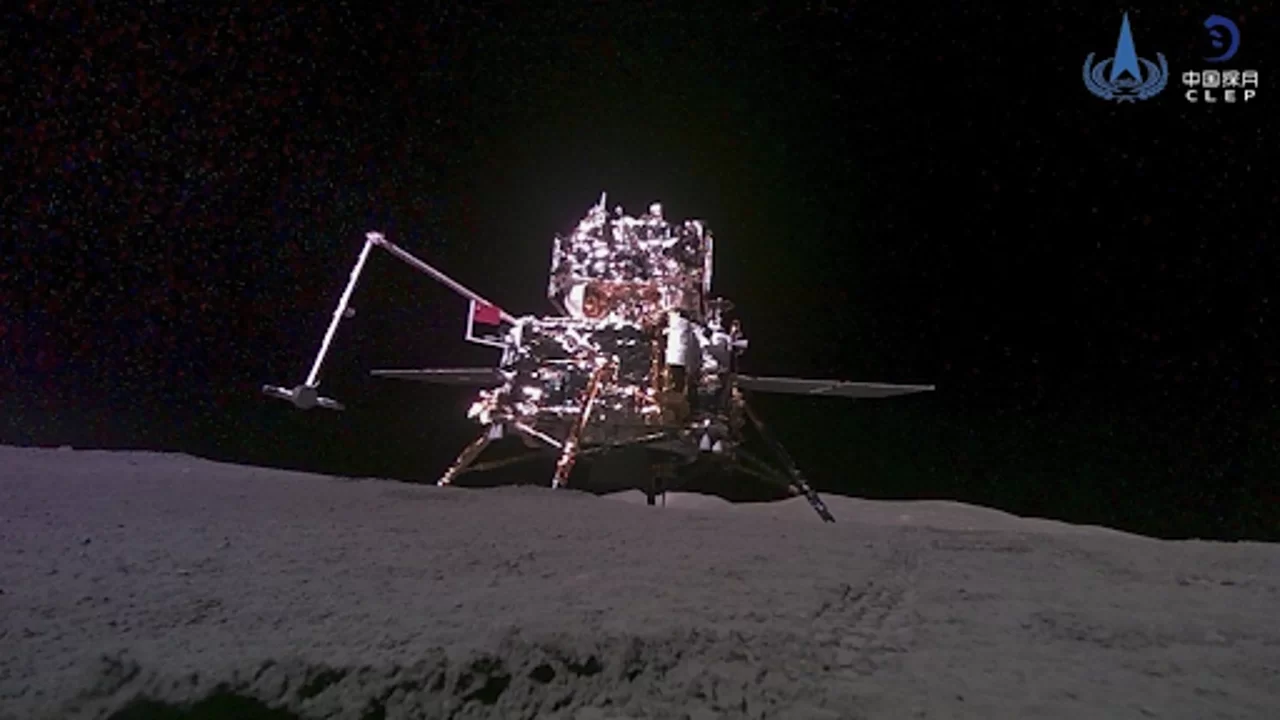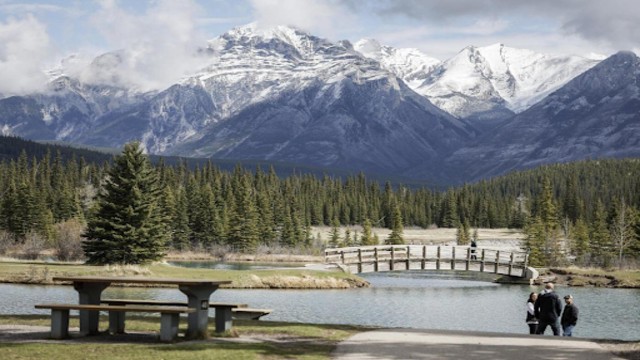
A photo released by Xinhua News Agency shows the Chang'e-6 probe's lander-ascender combination on the moon’s surface, captured by a mini rover on June 4, 2024. This image was provided by the China National Space Administration (CNSA).
China’s Chang’e-6 mission, which made history by retrieving lunar soil from the moon’s far side earlier this year, has provided groundbreaking insights into the moon’s volcanic past. This mission marks China’s impressive position as a leader in space exploration, bringing back 1.9 kilograms (4.2 pounds) of lunar soil via a robotic probe. The samples were collected in June before returning to Earth, a feat that places China among the top space powers globally.
The lunar soil contains volcanic rock that dates back 2.8 billion years. This discovery suggests that the area where the Chang’e-6 probe landed was volcanically active during that time, a finding that had never been observed from samples collected by previous missions, including NASA’s Apollo program and Russia’s Luna missions. These new findings offer insights into a relatively recent period of lunar volcanic activity, which was previously unknown.
Clive Neal, a professor at the University of Notre Dame and co-author of the research, pointed out that the basalt rocks retrieved from the far side of the moon are surprisingly younger than the samples collected by past missions. Previous lunar samples from the near side of the moon were over 3 billion years old, while some of the most recent samples from China’s Chang’e-5 mission, collected in 2020, were found to be about 2 billion years old. The age of the rocks, along with their lack of radioactive elements commonly found in older samples, raises interesting questions about how these magmas were formed.
On June 25, the return capsule of the Chang'e-6 probe, which carried lunar samples from the moon's far side, is seen after landing in the Inner Mongolia Autonomous Region of China. CNN
This discovery also challenges previous assumptions based on Apollo mission data, which suggested that the moon’s volcanic activity was much older. According to Richard W. Carlson, a scientist emeritus at the Carnegie Institution for Science, the Apollo samples led to a narrative about the moon's formation that didn’t fully account for the far side's characteristics. The far side of the moon, which always faces away from Earth, has a different topography, including a thicker crust, different concentrations of thorium, and basalt distribution, as previously revealed by remote sensing.
The Chang’e-6 mission has allowed scientists to study these differences in more detail, helping them to understand the distinct volcanic history of the moon’s far side. Qiu-li Li, a researcher at the Chinese Academy of Sciences, said that studying these samples will help explain the far side’s volcanic history, an unresolved mystery in lunar studies.
One of the key findings from the Chang’e-6 samples is that the basalt fragments are about 2.8 billion years old, though one fragment dates back to 4.2 billion years. This suggests that the moon’s molten period may have lasted longer than previously thought. Scientists are still puzzled by why the moon remained molten for so long, especially since it is a relatively small body that should have cooled off much faster.
Interestingly, the Chang’e-6 samples did not contain KREEP, a mixture of potassium, rare-earth elements, and phosphorus found in other lunar samples. KREEP is believed to have contributed to the moon’s prolonged volcanic activity, which is why its absence in these samples adds another layer of mystery.
The lunar samples collected by the Chang'e-6 mission may provide valuable insights into the differences between the moon's near side and far side. CNN
Looking ahead, further research on these samples is expected to uncover more about the moon’s volcanic past. Scientists from around the world, including the United States, will soon be able to apply to study these samples. The China National Space Administration (CNSA) has set a two-year waiting period for foreign researchers, following a protocol similar to the one used by NASA during the Apollo era.
These initial findings from the Chang’e-6 mission are only the beginning. Scientists continue to explore the implications of this lunar treasure trove, hoping to answer lingering questions about the moon’s history and formation.















